Coming Soon ...
3.14
Feeding systems
Level 2 - Lead Farmers
Introduction
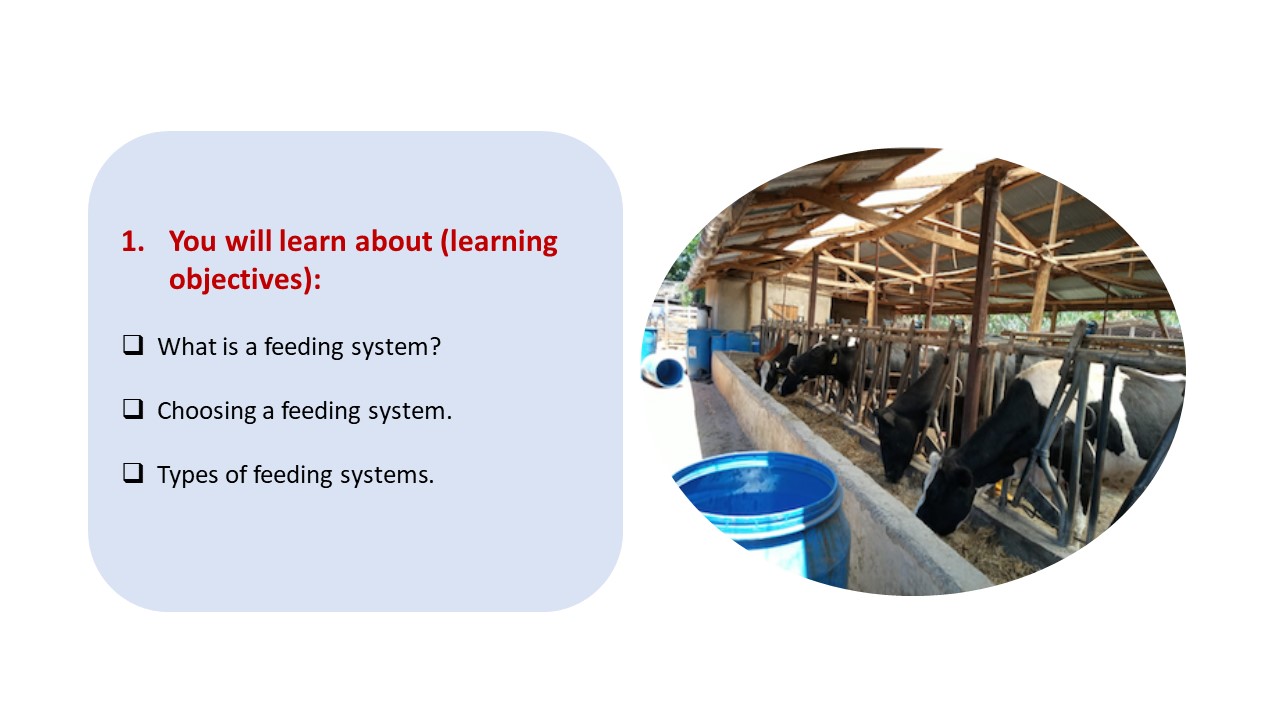
1. You will learn about...
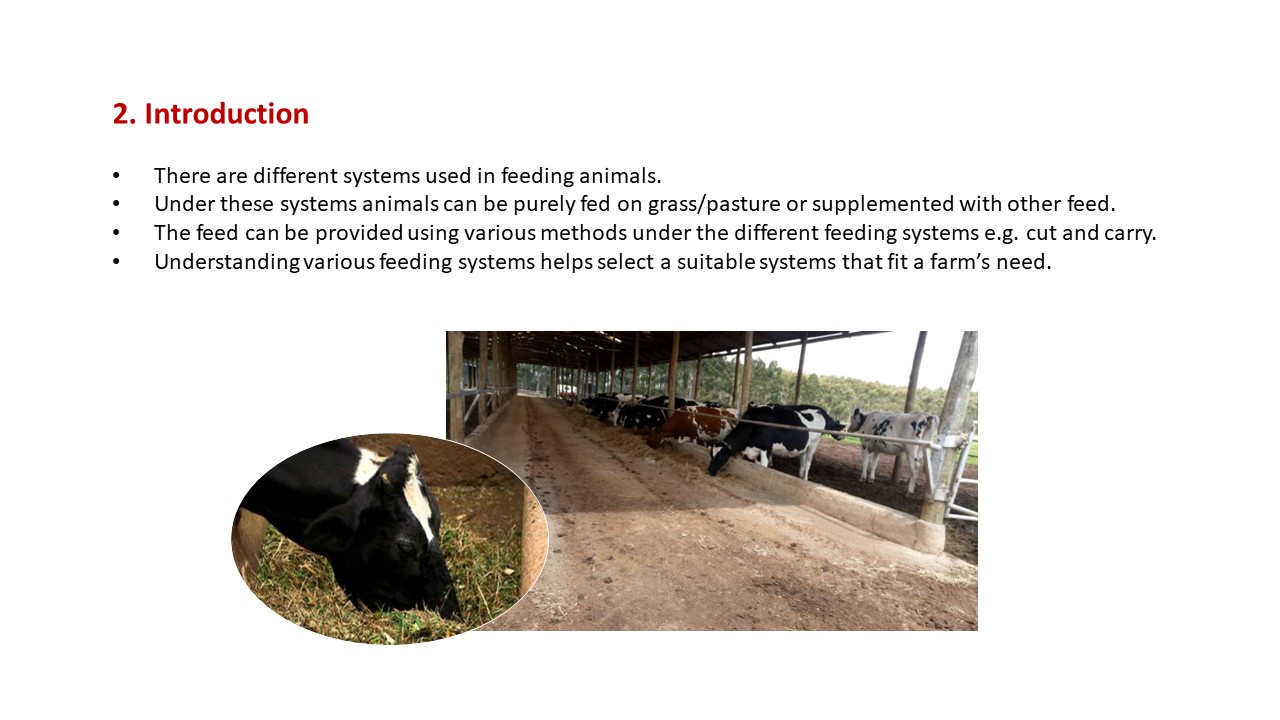
2. Introduction
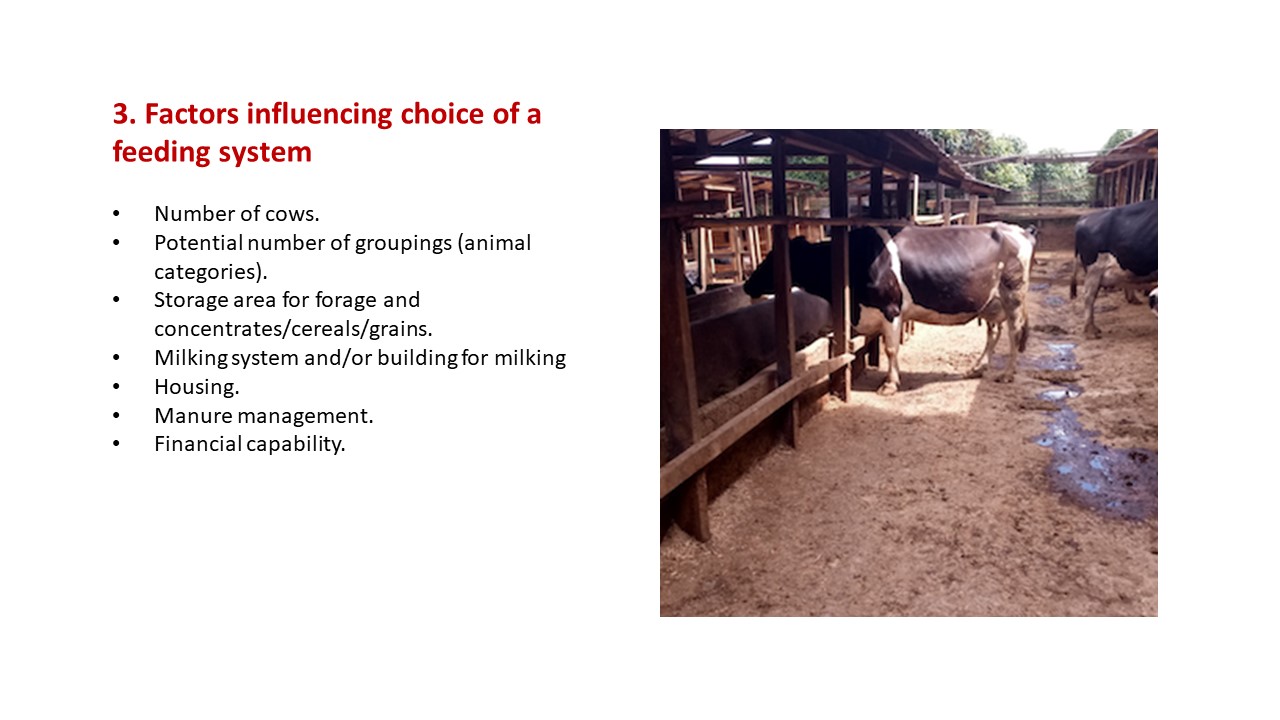
3. Factors influencing choice of a feeding system

4. Guidelines for selecting a feeding system
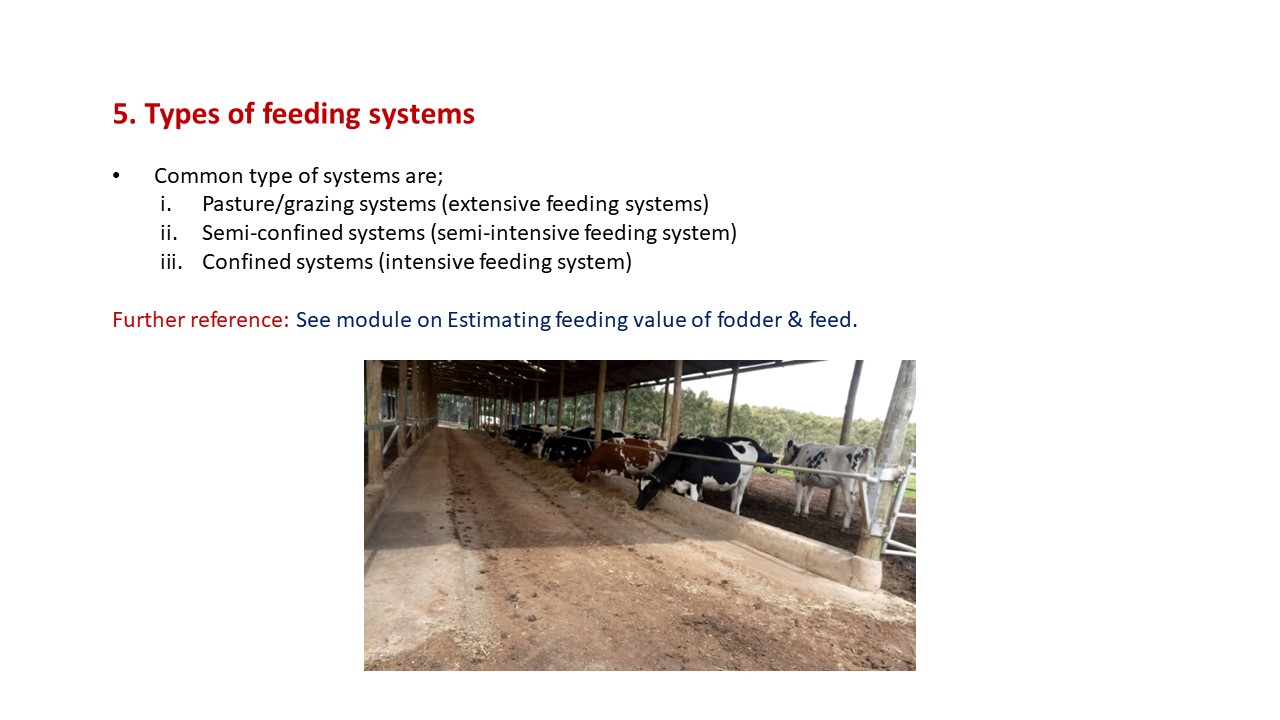
5. Types of feeding systems
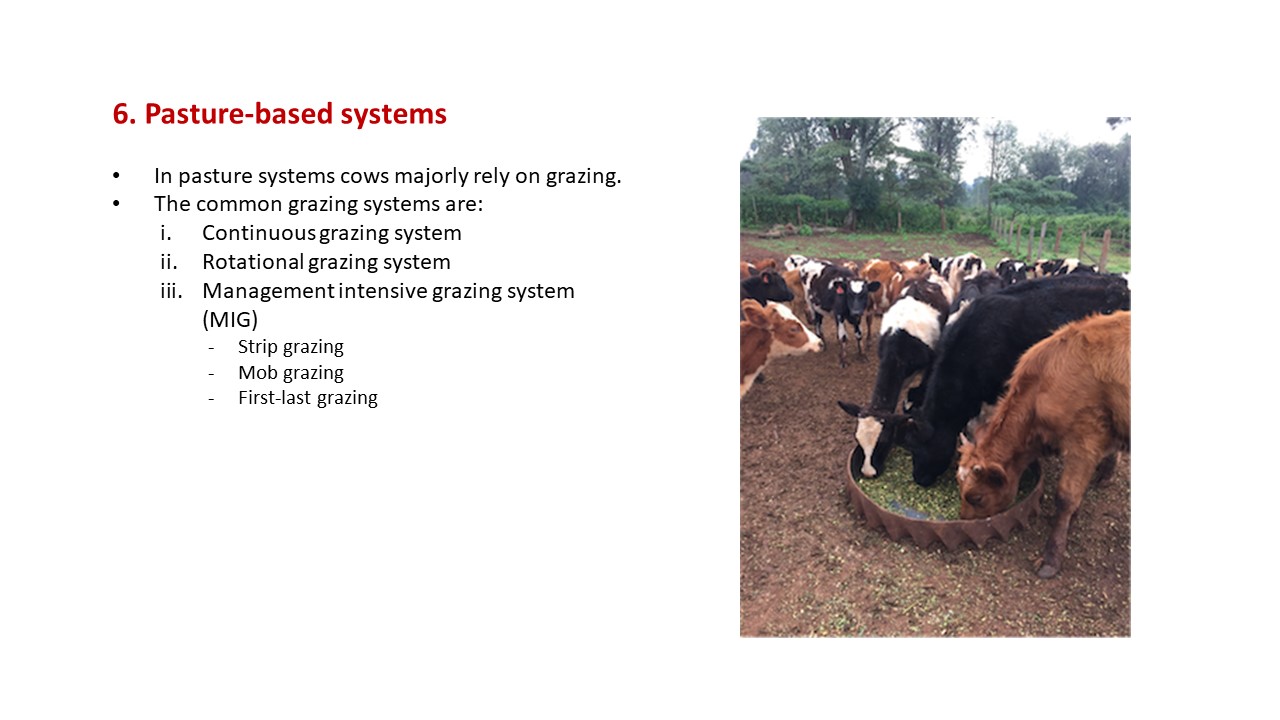
6. Pasture-based systems

7. Pasture-based systems: Continuous grazing

8. Characteristics of continuous grazing

9. Pasture-based systems: Rotational grazing

10. Importance of rotational grazing

11. Pasture-based systems: Management intensive grazing system (MIG)
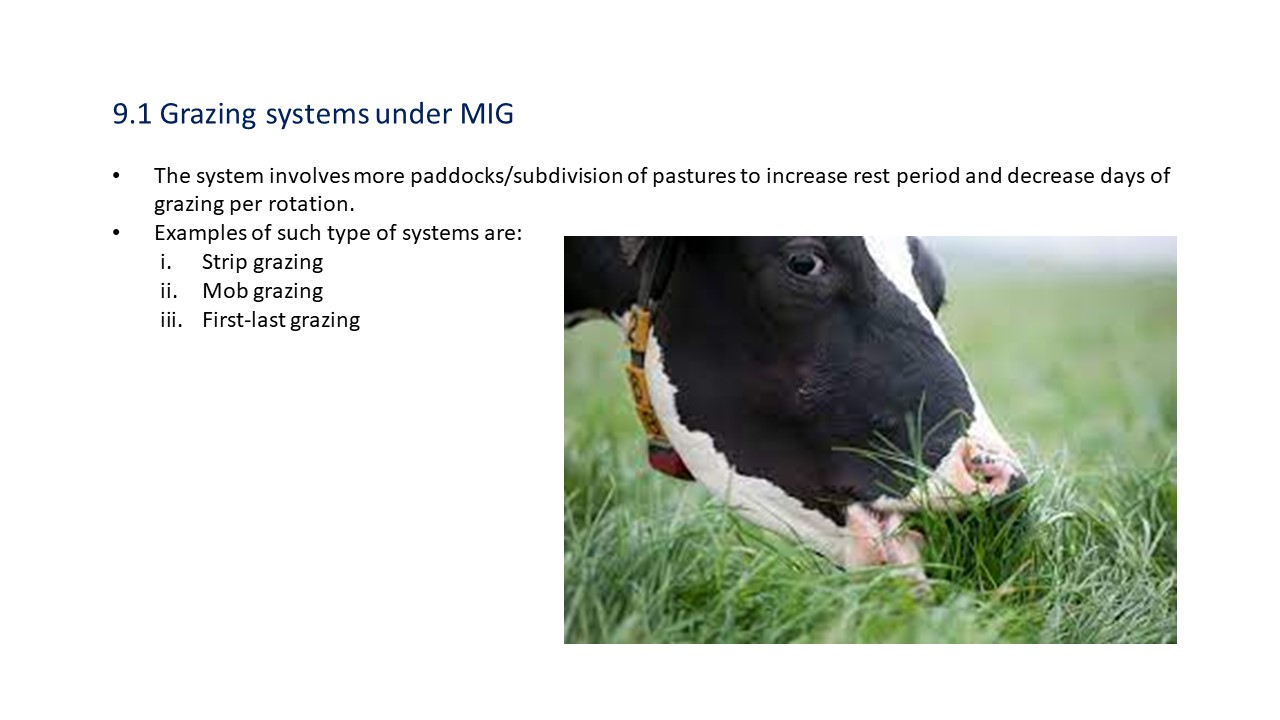
12. Grazing systems under MIG

13. MIG: Strip grazing

14. MIG: Mob grazing

15.MIG: First-last grazing

16. Benefits of MIG systems

17. Feeding cows on pastures

18. Checklist for cows on pasture-based systems

19. Pasture based problems

20. Semi-confined systems

21. Fully confined feeding systems

22. Advantages of confined feeding systems: Fully and semi confined feeding systems





















